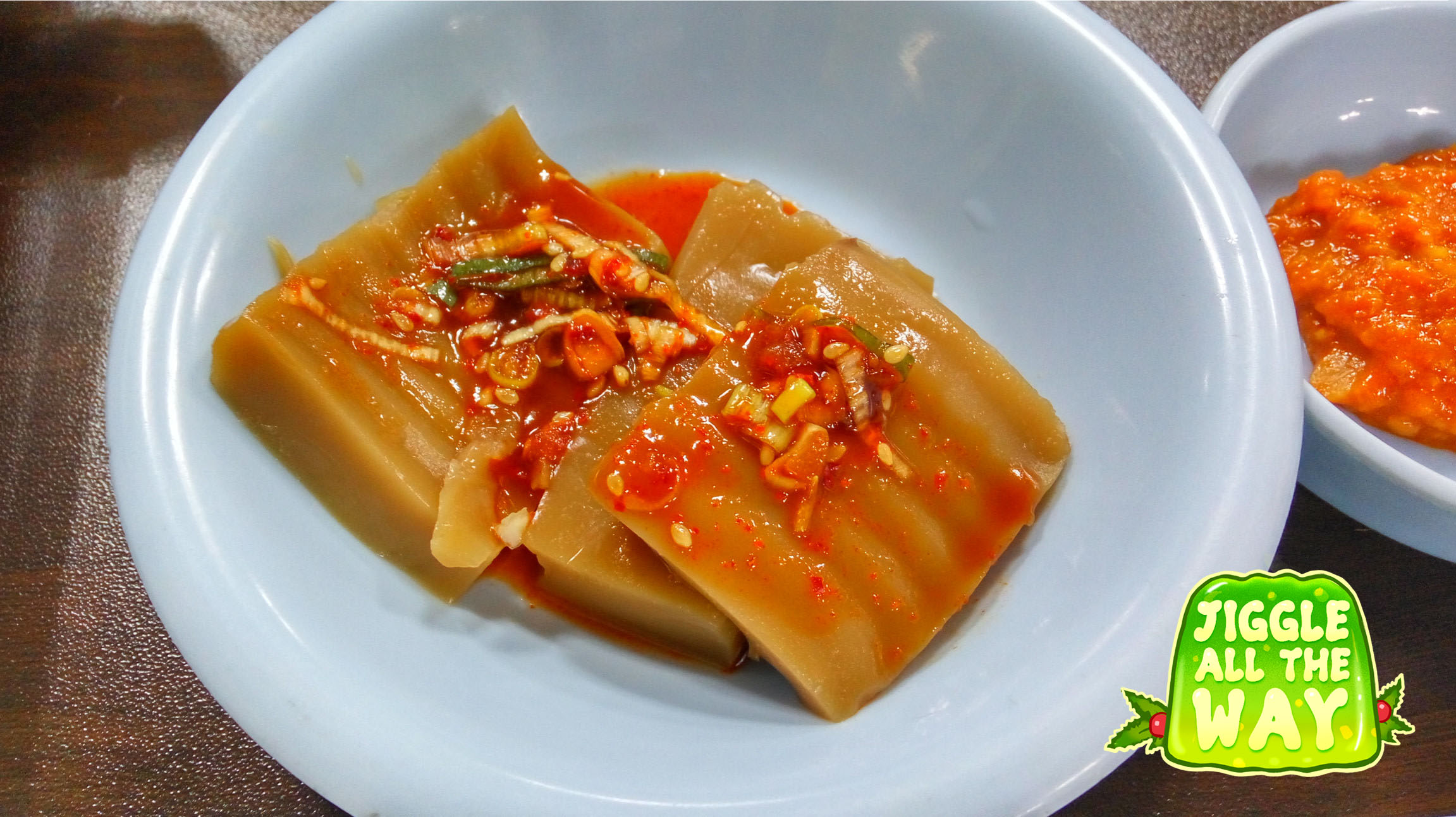Dotori-Muk, The Jelly You Make From Acorns
Welcome to Jiggle All The Way, The Takeout's holiday celebration of Jell-O, gelatin, and all things wiggly. We'll be releasing new feature stories and original holiday recipes every day this week, and each of them will have a little bit of wobble.
Hey, not everything that quakes when you move it has to be made out of gelatin. 도토리묵, (aka dotori-muk, for those of you who don't read Korean) is about as jiggly as a bowl of Jell-O. Jiggle jiggle. And dotori-muk, in case you were wondering, is acorn starch jelly.
The word muk by itself means jelly, but if you hear people talking about muk, they're almost always referring to dotori-muk. You'll typically see it as banchan for Korean meals, sitting in one of those tiny side dishes near your rice bowl. And it's really made out of acorns!
But don't go stuffing acorns in your cheeks just yet, because acorns can make you pretty sick in their raw state. When I was a little kid, I tried raw acorns a few times, which is how I became the fine specimen of a human being I am today. If my memory serves me correctly, they're pretty gross straight off the tree. I never got past a tiny nibble because they were bitter and mealy.
Acorns have a lot of tannins in them that are potentially toxic to humans and other creatures. In order to be able to eat them, you've got to leach out all the bad stuff by soaking the acorns in water. For muk, the acorns are ground up into a fine paste that's soaked in fresh water. That water will turn brown, and when that happens, you pour the brown water out and replace it with fresh water again. If you do that until the water stays clear, the acorn starch becomes usable for cooking. You're going to have to be patient, because this process can take days.
Once the acorn paste is properly leached, it's boiled with water to extract the starch until the liquid is reduced and it becomes thickened. After that, you let it sit in a container to set, and voila, after a week of patiently waiting, you've got acorn jelly.
Or, if you're not that patient (me), you can buy prepared acorn flour from the Korean supermarket. And if you're less patient than that...you can even buy the jelly premade. Of course I was going to offer that option.

Don't get it confused with mung bean jelly, 청포묵 (cheongpo-muk), which is a pale white jelly that also jiggles and has a very similar texture. It is made with mung bean starch in a similar fashion to the acorn version.
Neither jelly comes undressed; by itself acorn jelly has a subtle (dare I say, nutty?) flavor with a slightly bitter aftertaste, while mung bean jelly has a clean neutral flavor. You don't eat them plain because you'd get bored very quickly. Dressings for both jellies are typically made of a varying combination of soy sauce, sesame seeds, green onions, gochugaru (Korean red chili powder), sesame oil, seaweed, and sometimes a little fish sauce.
Fun language note: Once the jelly is dressed, you'll see the word muchim tacked on after, which means "seasoned." So, dotori-muk muchim (or cheongpo-muk muchim for the mung bean version) for the completed dish. And you'll see that word on a lot of Korean recipe titles, so that way you know that it's a dressed or seasoned dish.
If you're about to dig into any kind of jelly banchan, be forewarned that all of it is extremely difficult to handle with chopsticks. We know. It's fine. It rips up for everyone. You will probably drop it. That's okay. The trick for me is a feather-light touch while holding the muk horizontally. Zero pinching. It sounds impossible, and sometimes it is, but I believe in you. And one last thing: You chew ever so slightly. This isn't melt-in-your-mouth savory gelatin, like aspic, since it's starch-based.
So that's one jiggly mystery crossed off the banchan list, once communal dining becomes a happy norm again. Muk is fun to look at and fun to eat, and who doesn't like food with a bit of wobble to it?
